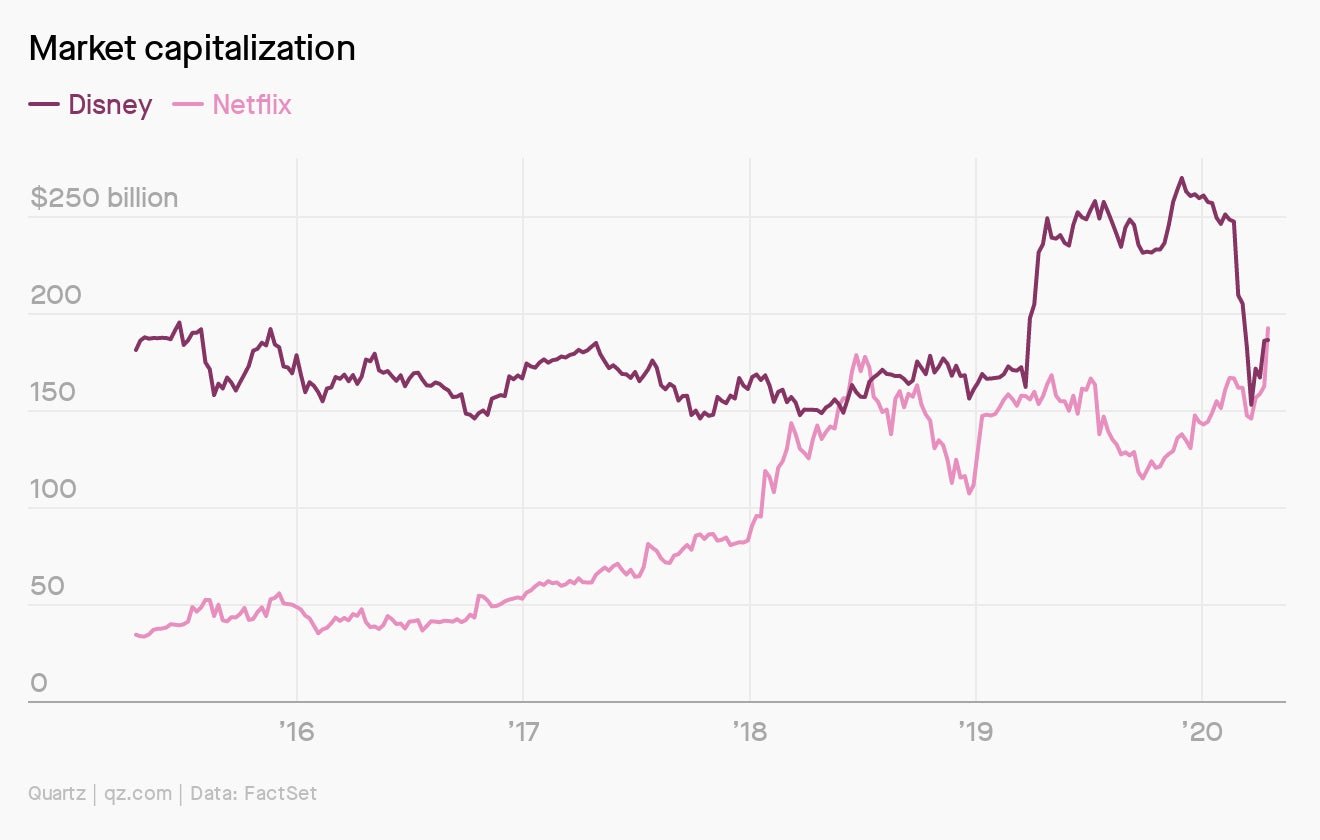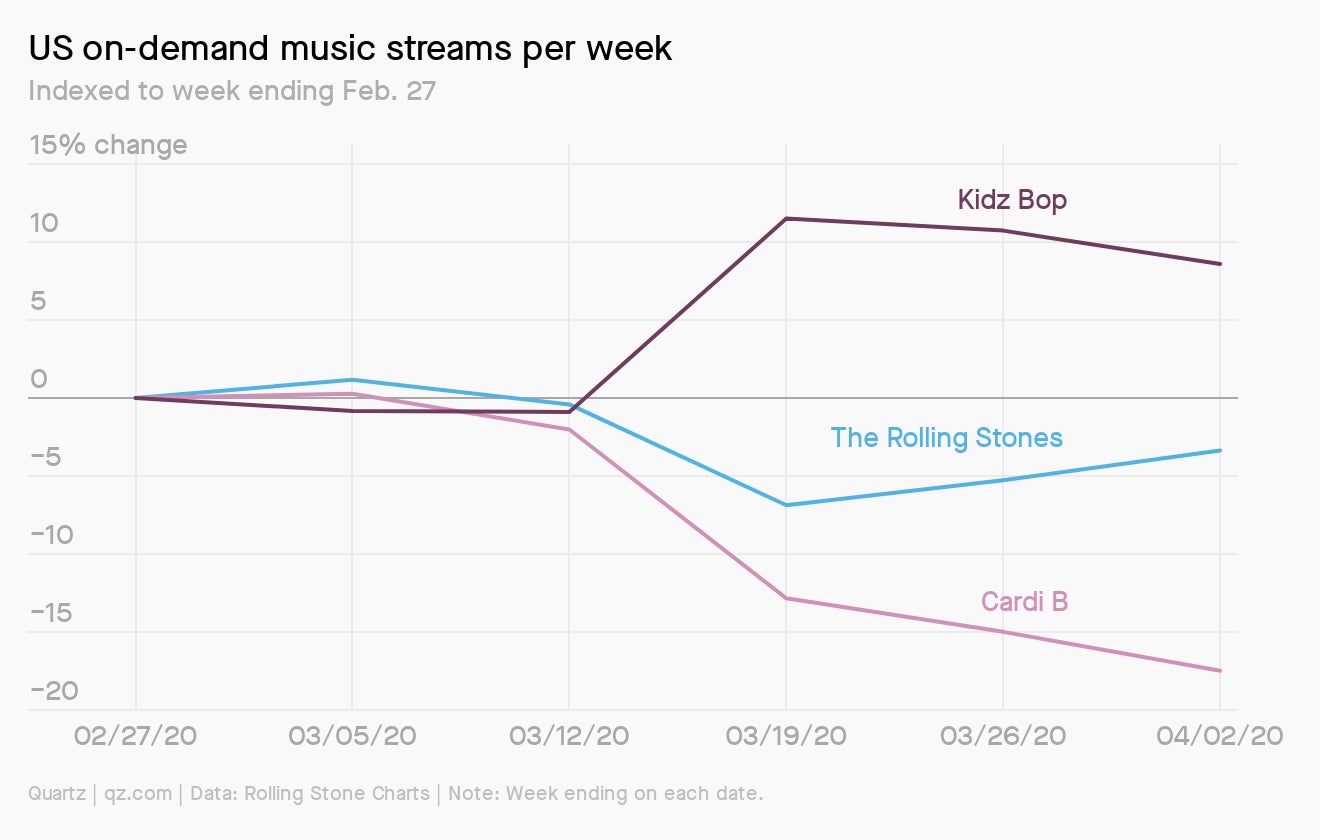Coronavirus: This is what you’re craving
Hello Quartz readers,

Hello Quartz readers,
While it’s too soon to end lockdowns in most places, government leaders around the world are itching to send Save the Dates. On Monday, French president Emmanuel Macron said quarantine in the country will start to gradually lift on May 11.
That much specificity is bold, but not entirely illogical. After all, our brains crave it. “The combination of uncertainty and danger is a recipe for severe angst,” writes psychologist Arie Kruglanski. “It feeds an intense desire for certainty, better known to psychologists as the need for cognitive closure.” Kruglanski, who coined the term, defines cognitive closure as “individuals’ desire for a firm answer to a question and an aversion toward ambiguity.”
Finally, a name for that highly-distracted, tight-chest, restless-leg, still-can’t-stop-touching-our-face feeling. May you all find a little cognitive closure this weekend.
Let’s get started.
Can I get an Rt?
Most people these days are familiar with “R0.” Pronounced R-naught—also known as the basic reproductive number—it refers to how many other people will catch a disease from a single infected person, in a population that hasn’t previously been exposed. If R0 is below one, the epidemic eventually peters out. Above one, it will grow, possibly exponentially.
Early on in the Covid-19 outbreak, different teams of researchers came up with varying estimates of R0, most ranging between two and three. But R0 is not set in stone. It’s an average, and can also vary from place to place. As science journalist Ed Yong put it in the Atlantic, R0 “is a measure of a disease’s potential.” Once response measures are put in place—screening and quarantines, for example—the actual transmission rate can be lowered. That “effective” version of the reproductive number is known as Rt: the virus’s actual transmission rate at a given time (t).
The delicate post-lockdown dance—easing measures bit by bit, but not too much or too early—will be a major challenge in the months to come. This is where the Rt can help. By showing how SARS-CoV-2 is spreading in a particular population in real time, Rt gives local policy makers an up-to-date snapshot, which helps them adjust their policies. Relaxing and tightening suppression measures based on the real-time Rt is similar to the “adaptive triggering” (pdf) strategy proposed by researchers at Imperial College London.
Hong Kong University’s school of public health has been estimating Hong Kong’s real-time Rt since early February. It found an estimated Rt of nearly 2.3 on Feb. 3, falling steadily to 0.4 by Feb. 27 as Hong Kongers launched into a hygiene hyperdrive—so much so that the city saw a sharp corresponding drop in flu cases—before creeping back up above one in March as people appeared to let down their guards, and as a flood of imported cases portended a second wave of infections. The latest available Rt, on Apr. 5, is just above 0.7.
Until a vaccine is developed for Covid-19, and absent an indefinite lockdown at high socioeconomic cost, it may be very difficult for any society to get Rt down to 0. But that might not be necessary. “There’s no need to get the infections to get down to zero, because even if you get down to zero” there will invariably be new imported cases, says Ben Cowling, division head of epidemiology and biostatistics at HKU. What’s needed is a careful calibration of measures, and the Rt provides the roadmap for just that.
Taking the Mickey out
For only the second time ever, Netflix is worth more than Disney. And this time, the streaming giant may chill that way for a while.
Netflix’s stock surged to an all-time high on Wednesday, putting its market capitalization at $187.3 billion. Disney’s market cap, meanwhile, has plummeted in the last two months as the coronavirus pandemic ravages its movies and parks businesses. In February, the Mouse House was valued at more than $250 billion. Now it’s closer to $187 billion.

☝️ That’s a Quartz member exclusive, by the way.
- “I’ve always seen the WHO’s lack of funding as a symptom, not a cause, of their problems. People don’t trust them, and that’s why they’ve underfunded them.” —Ashish Jha, director of the Harvard Global Health Institute
- “The biggest thing is the collapse in the restaurant and food service demand. It’s tough to get numbers, but I would estimate as much as 40% of dairy goes into food service channels.”—Lucas Fuess, a food industry analyst with HighGround Dairy
- “People are looking for distraction. I think people are missing sport and that doesn’t mean just directly the competition on the sports field. For a lot of people that’s the ambience, the cadence.” —Rugby announcer Nick Heath
It’s no Mickey Mouse Club, but we think becoming a member is pretty cool. Sign up for a free 7-day trial, and we’ll look into getting hats shaped like shards of quartz.
Facing the music
The soundtrack of this pandemic is…Kidz Bop. While overall song streaming appears to be down in the US, not every artist’s streams are suffering equally.
A Quartz analysis of data from BuzzAngle shows that the typical Latin and rap artist’s streams are declining most, while rock and R&B have been less damaged. Meanwhile, children’s music is getting a major bump. Here’s one way to think about it:

Essential reading
- The latest 🌏 figures: 2,214,861 confirmed cases; 564,525 classified as “recovered.”
- A weight on: Obesity may be a major coronavirus risk factor.
- Props: Mid-pandemic, 66% of South Koreans turned out to vote.
- Whoa: What does Covid-19 do to your brain?
- Fair enough: Florida deemed professional wrestling an “essential service.”
Our best wishes for a healthy day. Get in touch with us at [email protected], and live your best Quartz life by downloading our app and becoming a member. Today’s newsletter was brought to you by Annabelle Timsit, Mary Hui, Adam Epstein, Dan Kopf, and Kira Bindrim.